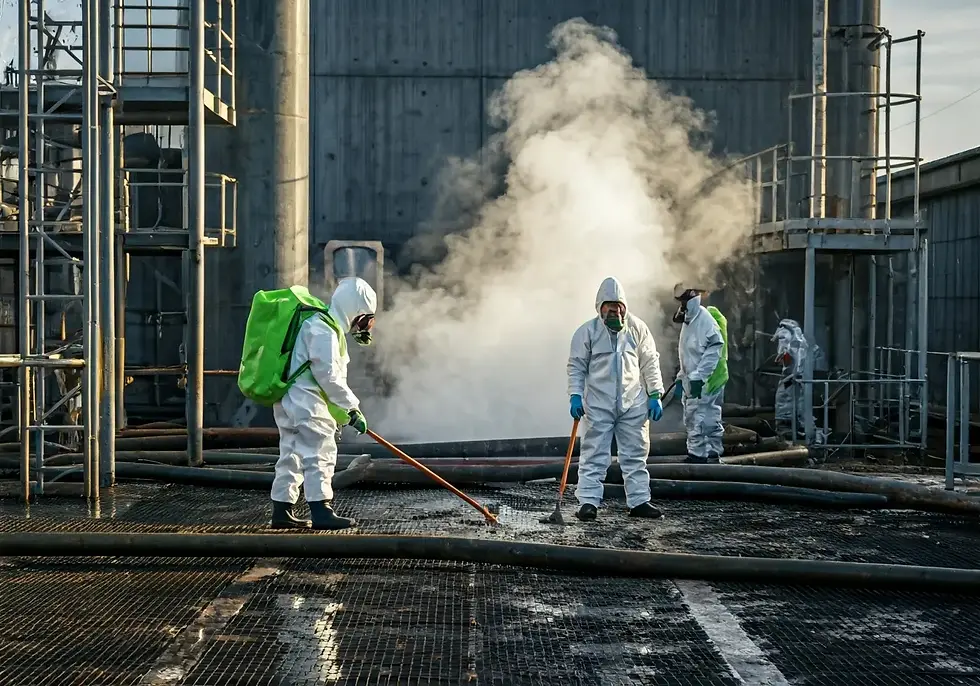Infectious Disease Cleanup: Protecting Your Home and Workplace
- Hench Ludwig
- 6 days ago
- 3 min read
Infectious diseases can pose a significant threat to our health and well-being, both at home and in the workplace. When an outbreak occurs, it's crucial to ensure our environments are thoroughly cleaned and disinfected. This blog will guide you through the essential steps of infectious disease cleanup, helping you protect your spaces and maintain a healthy environment.

Understanding the Risks of Infectious Diseases
Infectious diseases spread through various means, including air, water, and physical contact. Knowing the risks associated with different pathogens is the first step in effectively combating them. It’s important to educate ourselves on these risks to implement the right preventative measures.
Pathogens are diverse and can range from tiny bacteria and viruses to larger parasites. Each has its own mode of transmission and survival mechanism. For instance, some viruses thrive on surfaces for days, while others require direct human contact to spread. Understanding these differences is key to implementing targeted strategies for infection prevention.
In our interconnected world, the spread of infectious diseases is no longer constrained by geography. Travel and global trade have made it easier for these diseases to cross borders rapidly, posing a greater challenge to containment efforts. Therefore, awareness and education on global health trends become crucial in safeguarding personal and public health.
Essential Supplies for Cleanup
Before starting the cleaning process, gather all necessary supplies such as disinfectants, personal protective equipment, and cleaning tools. Each of these plays a vital role in safely and adequately cleaning infected areas.
Personal protective equipment (PPE) is indispensable when dealing with infectious disease cleanup. Items like gloves, masks, and gowns not only protect the cleaner from potential pathogens but also prevent accidental contamination of other areas. It’s critical to understand the proper usage and disposal of PPE to maintain its effectiveness.
Disinfectants are the backbone of any cleaning operation. Choosing the right type is important as not all disinfectants are effective against every pathogen. For example, hospital-grade disinfectants are designed to kill more resistant strains of bacteria and viruses. Reading labels and instructions will help ensure that all surfaces are treated correctly.
In addition to PPE and disinfectants, having appropriate cleaning tools can make the process more efficient. Mops, brushes, and wipes should be chosen based on the specific cleaning area to enhance the thoroughness and reach of your cleaning effort. Ensuring tools are clean and replaced regularly can prevent cross-contamination.
Step-by-Step Guide to Effective Cleaning
A systematic approach to cleaning is vital to ensure all areas are properly disinfected. Begin with high-touch surfaces, use the right amount of disinfectant, and adhere to recommended contact times to effectively eliminate harmful pathogens.
High-touch surfaces should be prioritized during cleanup because they serve as hotspots for germs. Items like doorknobs, light switches, and keyboards accumulate germs quickly, making them focal points in preventing the spread of infections. Frequent cleaning of these surfaces is a simple yet powerful step in breaking the chain of transmission.
It's crucial to follow the precise instructions provided on cleaning products. Each product has specific directions for use, including how long they must remain wet on surfaces to be effective. This is known as the contact time, and adhering to it ensures that the agents in the disinfectant have enough time to kill the pathogens.
Different regions of a structure might require varying cleaning methods. For example, bathrooms may necessitate stronger disinfectants compared to living areas. Ventilation also plays a role in cleaning effectiveness, as adequate air circulation helps disperse airborne pathogens, reducing chances of inhalation or settling on surfaces.
Importance of Professional Cleanup Services
While DIY cleanup is possible, sometimes professional services are warranted, especially for large or complex spaces. These services ensure thorough cleaning and help prevent further spread of diseases, offering peace of mind.
Professional cleanup services offer expertise and specialized equipment that might not be accessible to the average person. Their teams are trained to deal with hazardous pathogens safely and can perform tasks that require strict compliance with health standards. This is particularly important in larger and more complex facilities such as hospitals or schools.
Choosing the right professional service involves checking their compliance with health guidelines and their use of approved cleaning agents. A good service will also be transparent about its processes and provide detailed cleaning reports. This helps clients understand what measures have been taken and what further action, if any, might be necessary.
Ensuring Safety Through Proper Cleanup
By taking proactive steps in infectious disease cleanup, you can safeguard your home and workplace from potential health threats. Remember, cleanliness is crucial, and understanding the necessary steps will help you create a safer space for yourself and others. Stay informed, stay prepared, and stay safe.





Comments